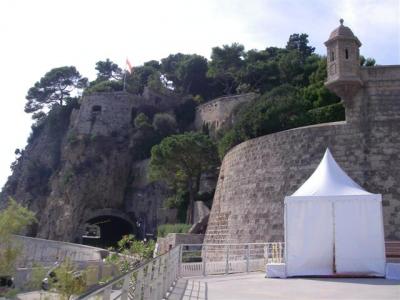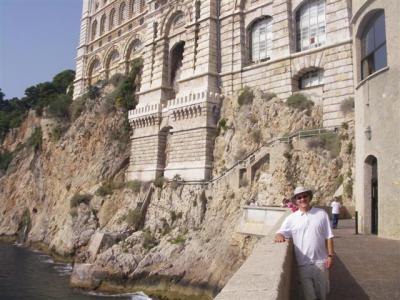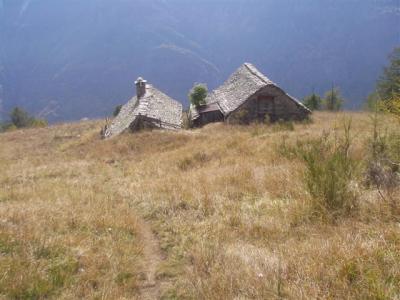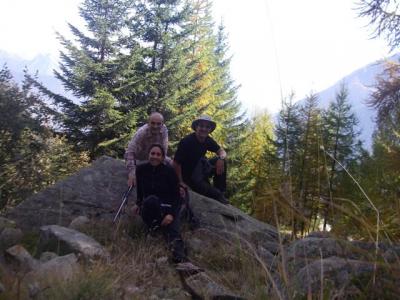Monaco has the biggest per capita police force in the entire world. There are closed circuit cameras everywhere. The entire city is closely monitored. This made Christi worried as we got dressed. With so many closed circuit cameras, there was absolutely no way to hide from the fashion police, a division that must surely exist here. We were both wearing pants purchased before we set off on our journey and they were way out of style now. Our shoes are practical camping kind of shoes, always totally out of fashion. Going out was risky. We could very well be arrested and deported for our clothing. But we’re risk takers.
We were delighted to see that one of the restaurants on the boardwalk served breakfast. Praise the Lord! We love going out to breakfast, and we hadn’t expected to see breakfast here. When we got our meal, we were sad to see that breakfast consisted of one soft boiled egg, toast, and a 16 ounce cup of tea, all for only $11.00 USD. So, yes, in this case, Monaco has lived up to its reputation for ridiculously expensive restaurants. And tax in restaurants here is 20%, which can add up fast.
After breakfast, we headed over to the historic district to do some sightseeing.
We couldn’t believe how nice the weather was. It was bright and sunny with no clouds in the sky. It was warm, but not hot. Talk about a nice change of pace from cold, rainy and gloomy Rome. We walked southeast down the boardwalk towards the mouth of the bay. At the end of the boardwalk, there is a set of stairs that takes you into what looks to be an old fortress. The round area on the right is now used as a theater.

The fortress is built on a sheer cliff, and these days is Continue reading →




